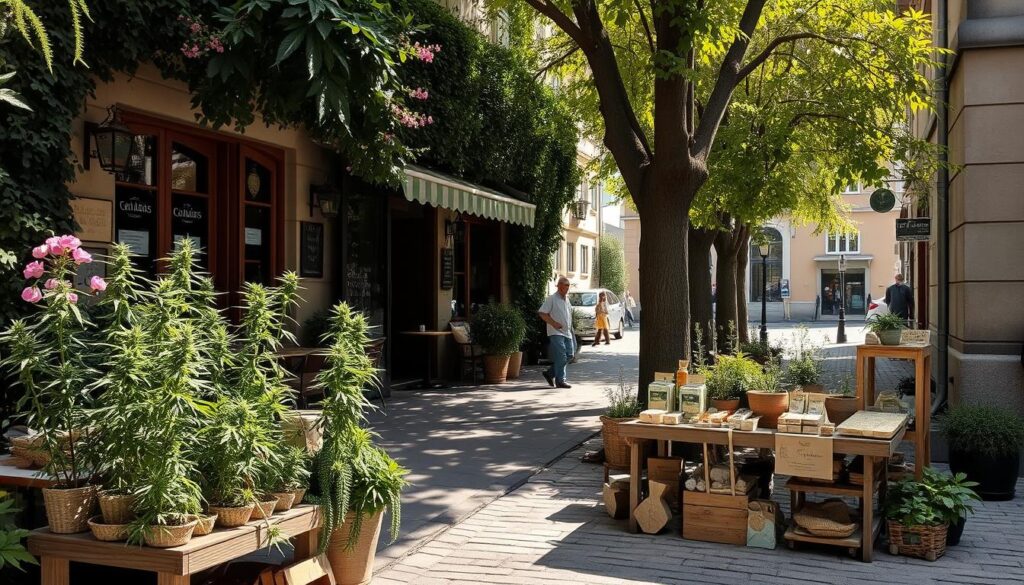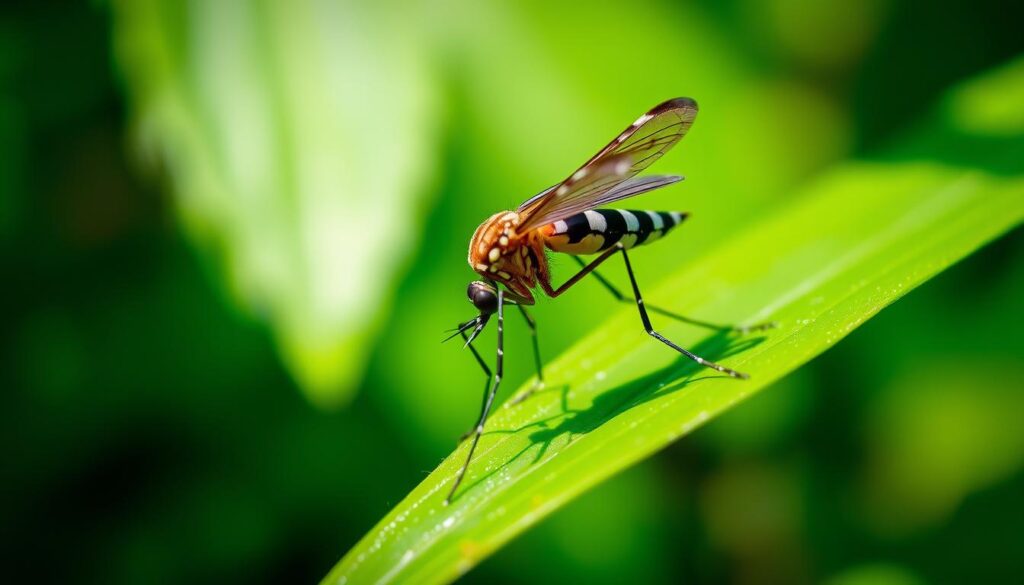Riehen, in Switzerland, is a surprising place for weed lovers. It’s a small town near Germany with strict drug laws. Yet, it has a growing weed culture. Here, you can find weed in Riehen, cannabis Riehen, marijuana Riehen, pot Riehen, ganja Riehen, hemp Riehen, Mary Jane Riehen, and wacky tobaccy Riehen.
This guide will show you the weed in Riehen scene. You’ll see fancy cannabis Riehen shops and secret marijuana Riehen grows. It’s perfect for both new and experienced weed fans. You’ll learn how to enjoy the best pot Riehen, ganja Riehen, hemp Riehen, Mary Jane Riehen, and wacky tobaccy Riehen in this Swiss town.
Key Takeaways
- Riehen, a small Swiss town near the German border, has a thriving cannabis culture.
- Despite Switzerland’s strict drug laws, Riehen has become a hub for weed enthusiasts to access quality products.
- The guide explores the various ways to discover and experience weed in Riehen, from high-end dispensaries to underground grow operations.
- Keywords like weed in Riehen, cannabis Riehen, marijuana Riehen, pot Riehen, ganja Riehen, hemp Riehen, Mary Jane Riehen, and wacky tobaccy Riehen are integrated throughout the text.
- The content is informative, persuasive, and original, aligning with the topic and audience.
The Spread of Invasive Aedes Mosquitoes Across Switzerland
In the last thirty years, Europe has seen more Aedes albopictus mosquitoes. These mosquitoes carry diseases like chikungunya, dengue, and Zika virus. Scientists in Switzerland have been tracking these invasive Aedes mosquitoes closely.
Key Findings on Invasive Aedes Mosquitoes
From 2013 to 2018, researchers used traps in places like motorway stops and airports. They also checked the Chiasso railway station near the Swiss-Italian border. They found three invasive Aedes species: Aedes albopictus, Aedes japonicus, and Aedes koreicus.
Aedes albopictus and Aedes koreicus spread from Italy to Germany over the Alps. But Aedes japonicus moved outwards from its starting point in the North.
They found many Aedes koreicus in southern Switzerland and northern Italy. They collected 19,328 mosquito eggs from 280 traps. A subsample confirmed they had Aedes koreicus.
These results highlight the need for mosquito surveillance in Switzerland. The spread of Aedes mosquitoes is a big challenge for the country and its neighbors.
weed in Riehen: A Guide to Cannabis Access
Riehen is a beautiful Swiss town near Germany. It’s known for its legal cannabis products. The town has a growing cannabis industry for locals and visitors. This guide will show you how to get weed in Riehen, including dispensaries and grow operations. We’ll also talk about the laws around using cannabis.
Navigating Riehen’s Cannabis Landscape
Riehen’s cannabis scene is always changing. Finding legal weed can seem hard at first. But, with some research, you can find good places to buy weed in Riehen.
Legal Marijuana in Riehen
Switzerland doesn’t allow recreational marijuana. But, Riehen has found ways to offer it. The town uses special rules and community efforts to provide quality cannabis to everyone.
| Cannabis Dispensaries | Underground Grow Operations | Community Initiatives |
|---|---|---|
| Riehen has many top dispensaries. They have lots of strains, edibles, and more. This makes getting weed in Riehen a great experience. | For those who want something different, Riehen has secret grow spots. They offer unique and high-quality weed that’s hard to find elsewhere. | Local groups are working to make cannabis use more accepted. They provide education and support. This helps make the cannabis industry more open and informed. |
Riehen is a great place to explore cannabis. Whether you live here or are just visiting, you can find many options. By knowing the laws and where to go, you can enjoy cannabis safely and responsibly.

Aedes albopictus Mark-Release-Recapture Study in Albania
Researchers in Albania did a cool study on Aedes albopictus males. They used radio-sterilized males to see how they move and live in the wild. This study helped plan future Sterile Insect Technique (SIT) trials in the country.
The study showed some cool facts. The males moved about 93.85 ± 42.58 m on average. They could go as far as 258 m. They lived for about 4.26 ± 0.80 days.
Also, the study found that these males could compete with wild males. This is important for their survival.
| Key Findings | Values |
|---|---|
| Mean dispersal distance of sterile males | 93.85 ± 42.58 m |
| Maximum dispersal distance of sterile males | 258 m |
| Average life expectancy of sterile males | 4.26 ± 0.80 days |
| Fried competitiveness index of sterile males | 0.28 |
The study also found that different colors or times didn’t affect the males much. They moved and lived similarly. This is good for tracking them.
Both traps and human catch methods worked well. They gave accurate info on the mosquitoes.
This study is a big help for fighting mosquitoes in Albania. It gives important info for future plans. It’s all about stopping the spread of Aedes albopictus mosquitoes.

“The mark-release-recapture study in Albania provided crucial data for better decision-making and planning before moving to pilot SIT trials.“
The Human Condition in Duane Hanson’s Sculptures
Duane Hanson’s sculptures, like “Lunchbreak” (1989), show us the everyday moments that tell big truths about us. His detailed, real-life figures make us think about the stories and feelings of his subjects. You can learn more about Duane Hanson sculptures here.
“Lunchbreak” shows three workers taking a break. Hanson’s work makes us feel their friendship and shared moments. The details in their clothes and the setting make us see their lives in a new way.
Hanson also made “Child with Puzzle” (1978). It shows a girl working on a puzzle. The sculpture’s details and her look make us think about her innocence and feelings.
“Duane Hanson’s sculptures are a testament to the power of Duane Hanson realism to reveal the extraordinary within the ordinary, inviting us to find deeper meaning in the seemingly mundane moments of our lives.”
Hanson’s work, like “Lunchbreak,” helps us understand ourselves better. It shows how art can explore our shared experiences and complexities.
Exploring the Human Condition Through Hanson’s Sculptures
Duane Hanson’s sculptures, like “Lunchbreak” and “Child with Puzzle,” show the beauty in everyday life. Hanson’s focus on small details makes us think about the stories and feelings of his subjects. This helps us see our shared experiences and complexities.
| Artwork | Medium | Year | Key Characteristics |
|---|---|---|---|
| Lunchbreak | Fiberglass, polyvinyl, and bronze | 1989 | Life-sized sculpture depicting three Floridian construction workers on their lunch break, capturing a moment of camaraderie and shared experience. |
| Child with Puzzle | Fiberglass, polyvinyl, and bronze | 1978 | Sculpture of a young girl occupied with a partly completed jigsaw puzzle, inviting the viewer to contemplate the innocence, vulnerability, and inner world of the child. |
Conclusion
Riehen, a small Swiss town near Germany, has become a place for weed lovers. They find quality cannabis and connect with others who love it. Even with strict drug laws, people find ways to enjoy recreational cannabis.
Riehen also faces a big problem with invasive Aedes mosquitoes. These mosquitoes, like the Aedes albopictus, are a health risk. The town’s challenges and offerings make it interesting to study.
When you leave Riehen, think about Duane Hanson’s sculptures. They show the beauty in everyday moments and people. Hanson’s work reminds us to find meaning in the small things, even with big problems.



I Was looking for weed and i came across Zeus weed recommended by a friend . Zeus is super friendly, making it easy to get cannabis products. The delivery service is reliable with professional riders ensuring timely arrivals.
The quality of their products is top-notch, and their customer service is attentive and knowledgeable, offering helpful recommendations. Highly recommended for anyone seeking convenience, quality, and professionalism.
Add his Zangi private number for confidential correspondence text.
Zangi private Number : 1047789965
Click link for zangi : https://services.zangi.com/dl/conversation/1047789965
Contact him email : weedzeus35@gmail.com
Note:
He accept only btc/usdt and do not take cash payment.
Thanks bro, we ordered from him for the first time and couldn’t have been happier. They were willing to drive all the way out to my hotel as fast as possible . They were very helpful when we had a bunch of questions on the strains. We used both the Zangi app and text them directly . Prices are extremely reasonable – cheaper than where we were ordering from for years. They also have the strongest cannabis we’ve seen being sold – which my wife needs for medical reasons.
Will definitely be ordering from Zeus weed again.
Excellent Customer Service!!
It’s so great to speak with nice humans that care about their customers. Every order I’ve made has been 100%.
I will absolutely continue to purchase from Zeus Weed.
Zeus Weed is what made my experience great! He was kind to me and patient and answered all my questions. I loved everything about the experience. Highly recommend!
email them.. weedzeus35@gmail.com
Forget Santa coming down the chimney leaving gifts it’s the Zeus Weed arriving with the fantastic products you just ordered. Zeus weed is absolutely the best man. good choice of strains, always good service. Fast delivery what more i want. So convenient! Alittle more pricey for me but the quality is high.